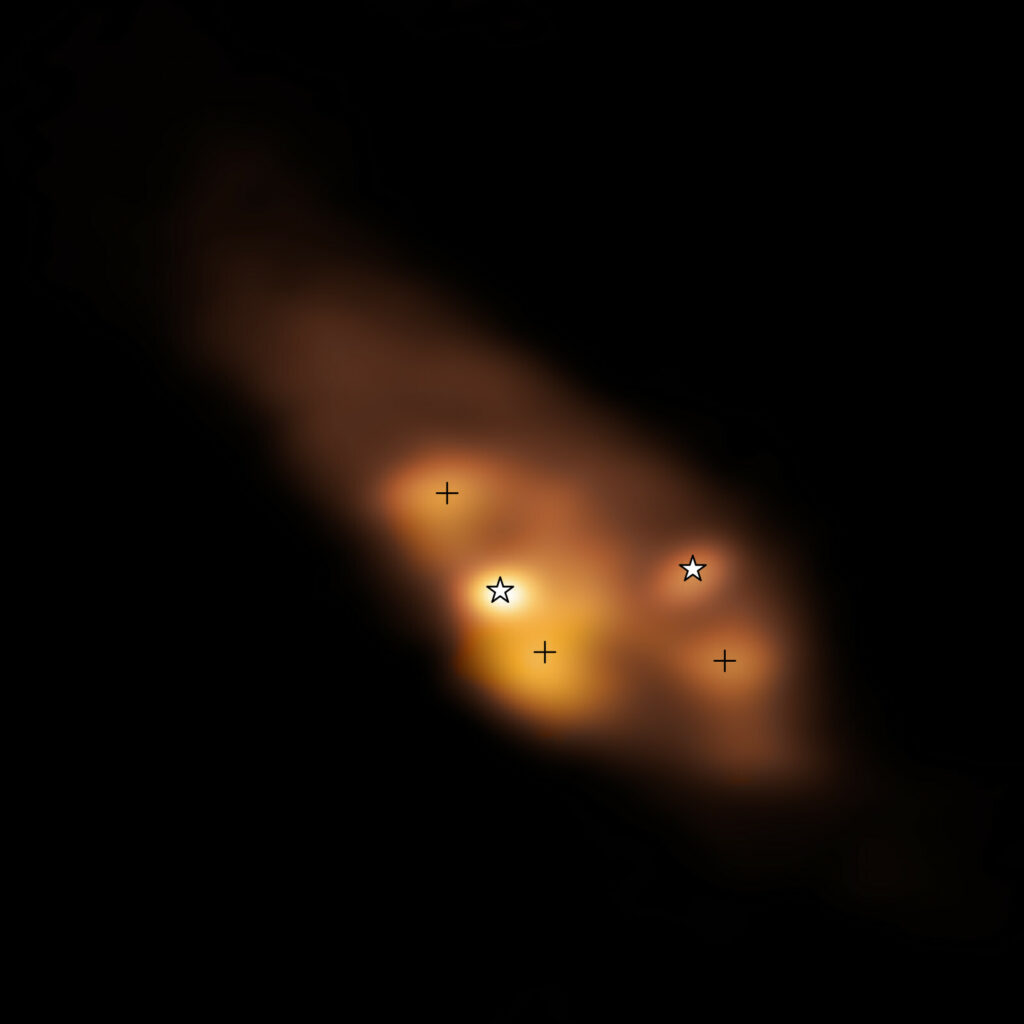During the observations made with the ALMA radio telescope, astronomers discovered areas with unusual properties around young stars. According to the researchers, their formation may be associated with shock waves.

The ALMA image shows similar regions. They are located in a dust disk surrounding two very young stars (their position is marked with asterisks). The colors indicate the temperature distribution: brighter shades correspond to a higher temperature.
When looking at the image, it is easy to notice that at some distance from the protostars there are three hot dust clusters (they are marked with crosses). But what exactly is heating them up?
A recent study performed by Maria Jose Maureira from the Max Planck Institute for Extraterrestrial Physics in Germany suggests that these regions are heated not only by protostars, but, in all likelihood, also by shock waves similar to those formed when an airplane moves in the air at supersonic speed.
Shock waves may help enrich the gas at the early stages of the formation of the circumstellar disk with complex organic molecules, which can later become part of the substance of newborn planets. High temperatures associated with shock waves can also affect the process of dust particles sticking together. Namely, it also depends on how early planetary cores can begin to form in the disk.
Earlier we talked about how ALMA discovered a hot gas bubble located in orbit around a black hole in the center of the Milky Way.
According to https://www.eso.org
Follow us on Twitter to get the most interesting space news in time
https://twitter.com/ust_magazine

